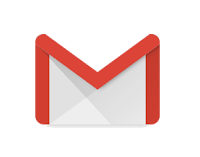iPads in the Classroom - More To Books Than the iBook Store
One advantage of the iPad is its versatility in dealing with books. There is a convenience factor in having one device to handle both eBooks and audiobooks. However, the fact that pdf files can be added to the device is a big bonus!
eBooks
Apple uses the ePub format for eBooks. This means you are able to find eBooks from many other sources outside the iBook store and use them on your iPad. These other books will even display on your “Bookshelf” in the iBooks app.
There are many advantages of using the ePub books. You can look up word definitions, annotate notes, highlight text & create bookmarks simply by clicking on the text. (A pop-up displays with these choices.) To add ePub files to your iPad:
In addition to ePub Books, PDF documents can be loaded onto the iPad. These will also be added to the iBook app. Adding PDF documents follows exactly the same steps as adding the ePub books above. Of course, if you are adding your own PDF documents you will not need to go get them from the Internet.
By default, PDF documents have their own Bookshelf as it categorizes them separate from the ePub books. To access them in the iBooks app, when looking at your bookshelf click on "Collections" (it is right next to "Store") in the upper left corner. You should see choices of "Books" and "PDFs" to select from. It is here that you can create your own collection categories if there is another way you would like to categorize your materials.
AudioBooks
Apple iTunes uses the ACC format for audio by default. However, the following formats are also compatible: M4A, M4B, M4P, MP3, WAV, Audible (formats 2, 3, & 4), Apple Lossless, and AIFF.
Follow these steps to get your Audio format books into iTunes:
Some useful sites for books, most are free or have a large range of free selections:
ePub Books
eBooks
Apple uses the ePub format for eBooks. This means you are able to find eBooks from many other sources outside the iBook store and use them on your iPad. These other books will even display on your “Bookshelf” in the iBooks app.
There are many advantages of using the ePub books. You can look up word definitions, annotate notes, highlight text & create bookmarks simply by clicking on the text. (A pop-up displays with these choices.) To add ePub files to your iPad:
- Find the desired ePub books online and download them to your computer (note where you download them so you can find them!)
- In iTunes, go to the File Menu and select Add File to Library.
- Find and select the downloaded book, making sure you get the ePub file (here I am adding Louisa May Alcott’s Little Women)
- It will add it to your iTunes Library under the Books icon (Note: If the Books icon is not visible, it will show up after you add the first book.)
In addition to ePub Books, PDF documents can be loaded onto the iPad. These will also be added to the iBook app. Adding PDF documents follows exactly the same steps as adding the ePub books above. Of course, if you are adding your own PDF documents you will not need to go get them from the Internet.
By default, PDF documents have their own Bookshelf as it categorizes them separate from the ePub books. To access them in the iBooks app, when looking at your bookshelf click on "Collections" (it is right next to "Store") in the upper left corner. You should see choices of "Books" and "PDFs" to select from. It is here that you can create your own collection categories if there is another way you would like to categorize your materials.
AudioBooks
Apple iTunes uses the ACC format for audio by default. However, the following formats are also compatible: M4A, M4B, M4P, MP3, WAV, Audible (formats 2, 3, & 4), Apple Lossless, and AIFF.
Follow these steps to get your Audio format books into iTunes:
- Find the desired audio books and download them to your computer (note where you download them so you can find them!). If you have a built-in audio player in your browser, you will need to right-click on the file link and choose to save it.
- In iTunes, go to the File Menu -> Add File to Library
- Find and select the downloaded book, making sure you get the audio file. (Here I’m adding a chapter of Huck Finn.)
- It will add it to your iTunes Library in one of two places:
- If it is a stand-along file, it will be in your Music library
- If it is part of a Podcast series, it will be in your Podcasts library
Some useful sites for books, most are free or have a large range of free selections:
ePub Books
- ePubBooks
- Project Gutenburg
- 300+ Places for Free Books Online (exhaustive list of both book collections and individual books offered by the authors; grouped by Genre at the bottom of the list to help)
- ePubBud
- ManyBooks.net
- Free ePub Children’s Picture Books
- Open Library
- Barnes & Noble eBooks·
- FlexBooks
- Liberty Library of Constitutional Classics (other formats, as well)
- Free High School Science Texts (Mathematics & Science texts; coordinated in South Africa!)
- 150 Free Textbooks (various formats)
- Open Textbooks – Community College Consortium for Open Educational Resources (various formats)
- Textbooks – Center of Mathematics
- Books Should Be Free
- Lit2Go (many of these are also available from iTunesU)
- 87 Places for Free Audio Books Online
- ThoughtAudio (philosophy & classic literature)
- LibriVox
- Podiobooks
- Open Culture
- Learn Out Loud





